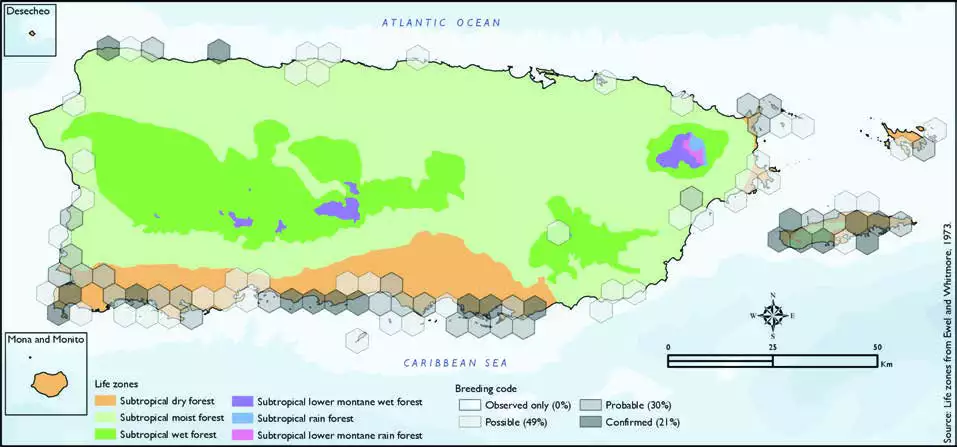Yellow Warbler
Description
The yellow warbler (Setophaga petechia) is a New World warbler species. Yellow warblers are the most widespread species in the diverse genus Setophaga, breeding in almost the whole of North America, the Caribbean, and down to northern South America.
Distribution & Habitat
The Yellow Warbler occurs throughout North America,
Central America including the West Indies, and northern South
America (Biaggi 1997, Raffaele
and others 1998). It is a common
resident throughout most of
the West Indies, although it
is uncommon in the northern
Bahamas, rare on Providencia,
and considered a vagrant on
Saba (Raffaele and others 1998).
In addition, some migrants
that breed in North America
occur in the Greater Antilles
mostly from October to March
(Raffaele and others 1998). It
occurs commonly on Puerto
Ricos south coast (Biaggi 1997),
as well as on satellite islands
such as Culebra (Wetmore
1917), Vieques (Gemmill 2015,
Sorrié 1975, Wetmore 1916), and
other mangrove and vegetated
cays off the northeast, while it is uncommon in the north
coast. It can be observed in
Boquerón Nature Reserve in
the municipality of Cabo Rojo
(Oberle 2018). In the West
Indies, this species inhabits
mostly mangroves and coastal
scrub (Raffaele and others
1998), as well as dry coastal
forests, marshes, and lowland
rivers (Oberle 2018). The atlas
fieldwork yielded a total of 214
records within 92 hexagons
or 19 percent of the 479 total
hexagons (see map). Of the 92
hexagons where this species
was found, breeding met the
atlas definition of confirmed in
21 percent (19) of the hexagons,
probable in 30 percent (28),
and possible in 49 percent (45)
(see map). Yellow Warbler distribution. The map shows the highest breeding code by hexagon and overlaying the ecological life zones in
Puerto Rico. Note: percentages may not total 100 due to rounding. 275Yellow Warbler/Canario de Mangle

Breeding Habits
Previously published reports indicate that the Yellow Warbler
breeds primarily from March to
July (Raffaele and others 1998).
It builds a cup-shaped nest made
of fine grasses, cotton, and other
soft plant material, usually placed
in a bush or tree close to water
(Biaggi 1997, Raffaele and others
1998). Atlas results show that
this species breeding season
extends throughout the year with
the most breeding activity from
March to July (see chart). The
breeding activity peaks in May
at the onset of the rainy season, and it mostly takes place in the
subtropical dry forest life zone
(see chart). Results show that
this species breeds primarily
breeds on the coastal plain,
mostly within the subtropical dry
forest life zone (68 percent of the
hexagons), and less commonly
in the subtropical moist forest
life zone (30 percent of the
hexagons) (see table and map).
Conservation
The current population trend of the Yellow Warbler is
described as stable in North
America (Butcher and Niven 2007). This species is currently
listed as a species of least
concern by the IUCN (BirdLife
International 2017). The nests of
Yellow Warblers are frequently
parasitized by Shiny Cowbirds,
which reduce warbler fl edging
success (Wiley 1985). Locally, this
species is not listed in any of the
threatened categories of PRDNER
and USFWS. In Puerto Rico, the
Yellow Warbler has a protected
habitat of 12 percent or 255 km2 of the total area covered by the
hexagons where this species is
known to breed (2200 km2).
Related Species
Family:
warbler